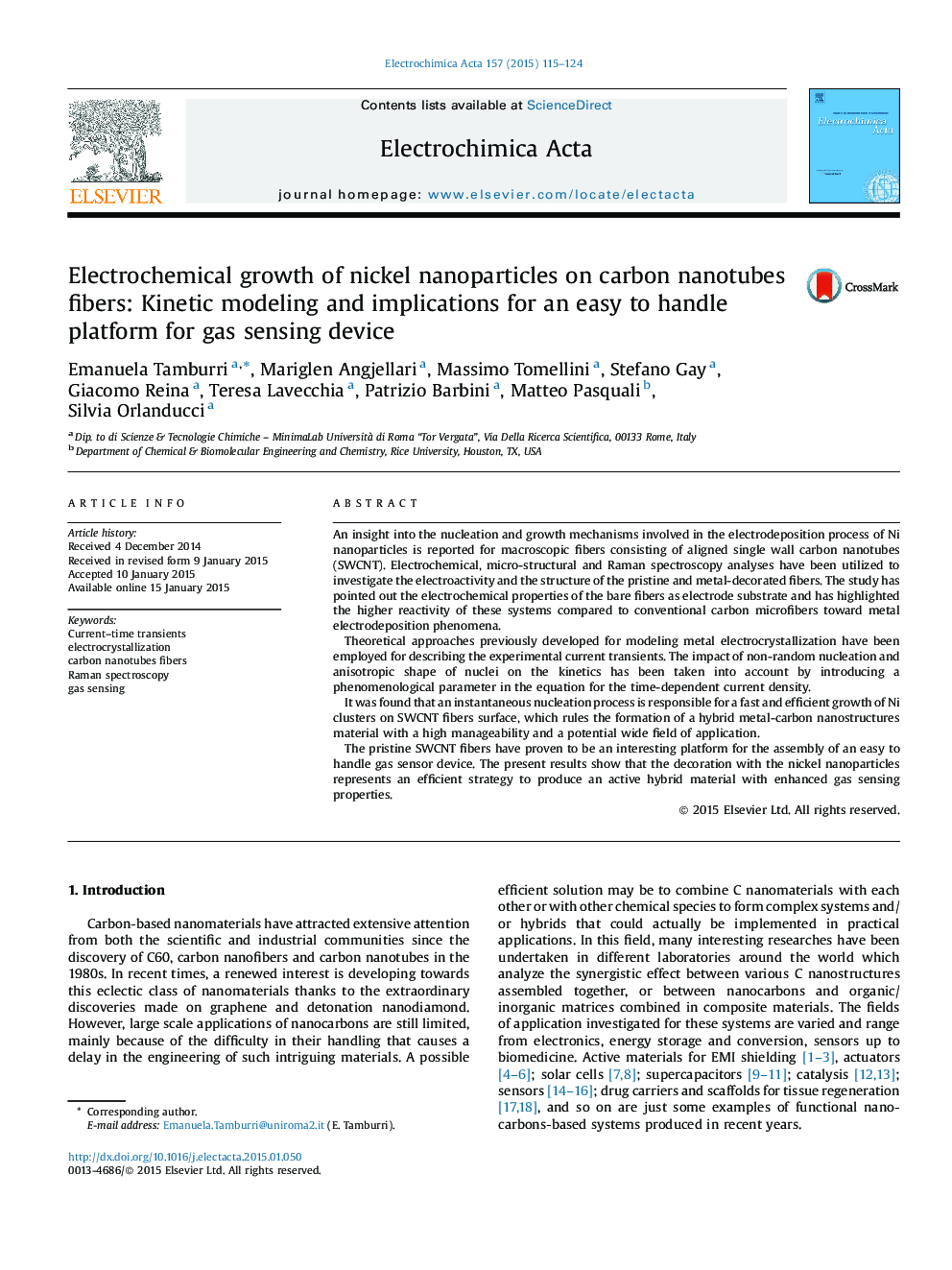| Article ID | Journal | Published Year | Pages | File Type |
|---|---|---|---|---|
| 184621 | Electrochimica Acta | 2015 | 10 Pages |
•Ni nanoparticles were electrodeposited on fibers made of aligned SWCNT.•A comparison with electrode properties of conventional C fibers was carried out.•Theoretical model describing potentiostatic current–time transients was proposed.•Ni decorated SWCNT fibers show enhanced gas sensing properties.•SWCNT fiber is reliable platform for assembling easy to handle gas sensor device.
An insight into the nucleation and growth mechanisms involved in the electrodeposition process of Ni nanoparticles is reported for macroscopic fibers consisting of aligned single wall carbon nanotubes (SWCNT). Electrochemical, micro-structural and Raman spectroscopy analyses have been utilized to investigate the electroactivity and the structure of the pristine and metal-decorated fibers. The study has pointed out the electrochemical properties of the bare fibers as electrode substrate and has highlighted the higher reactivity of these systems compared to conventional carbon microfibers toward metal electrodeposition phenomena.Theoretical approaches previously developed for modeling metal electrocrystallization have been employed for describing the experimental current transients. The impact of non-random nucleation and anisotropic shape of nuclei on the kinetics has been taken into account by introducing a phenomenological parameter in the equation for the time-dependent current density.It was found that an instantaneous nucleation process is responsible for a fast and efficient growth of Ni clusters on SWCNT fibers surface, which rules the formation of a hybrid metal-carbon nanostructures material with a high manageability and a potential wide field of application.The pristine SWCNT fibers have proven to be an interesting platform for the assembly of an easy to handle gas sensor device. The present results show that the decoration with the nickel nanoparticles represents an efficient strategy to produce an active hybrid material with enhanced gas sensing properties.
Graphical abstractFigure optionsDownload full-size imageDownload as PowerPoint slide
